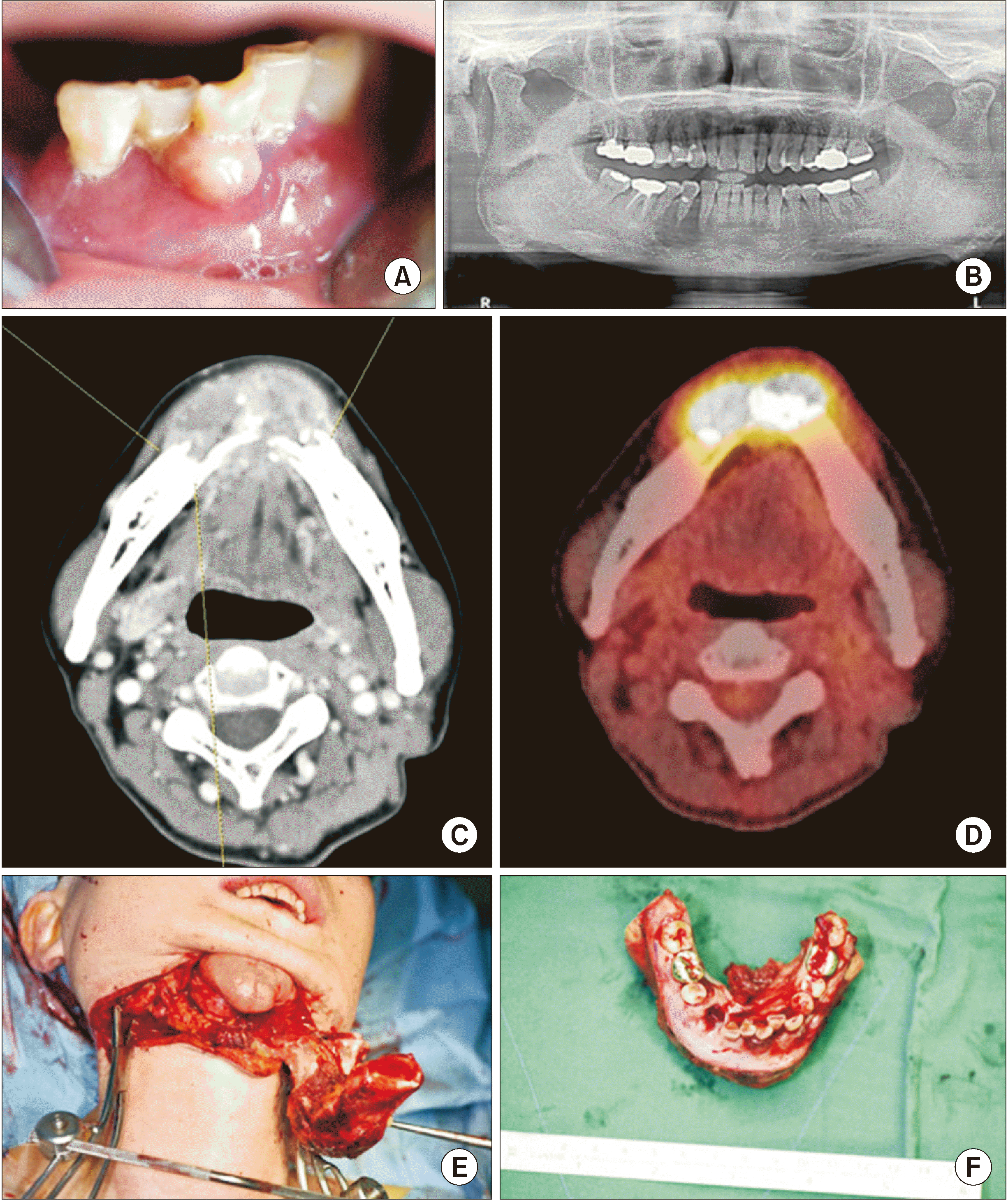Abstract
Objectives
Patients and Methods
Results
Conclusion
Acknowledgements
Notes
Author's Contributions
Y.S.K. participated in data collection and wrote the manuscript. A.A.A. and T.Y.J. participated in the study design and performed the English revision. J.I.L., S.M.K., and J.H.L. participated in the surgery, pathologic review and drafting the manuscript. All authors read and approved the final manuscript.
Ethics Approval and Consent to Participate
This study was approved by the Institutional Review Board of Seoul National University Dental Hospital (IRB No. ERI19006), and the informed consent was waived.
How to cite this article: Choi YS, Almansoori AA, Jung TY, Lee JI, Kim SM, Lee JH. Leiomyosarcoma of the jaw: case series. J Korean Assoc Oral Maxillofac Surg 2020;46:275-281. https://doi.org/10.5125/jkaoms.2020.46.4.275
References
Fig. 1

Fig. 2

Fig. 3

Table 1
Table 2
(Lt.: left, SOHND: supraomohyoid neck dissection, Ant.: anterior, Mx.: maxilla, FTSG: full-thickness skin graft, SND: selective neck dissection, STSG: split-thickness skin graft, RT: radiotherapy, CHT: chemotherapy, INA: information not available, Meta: metastases in other sites [except neck lymph nodes], LD: latissimus dorsi, F/U: follow up)




 PDF
PDF Citation
Citation Print
Print



 XML Download
XML Download